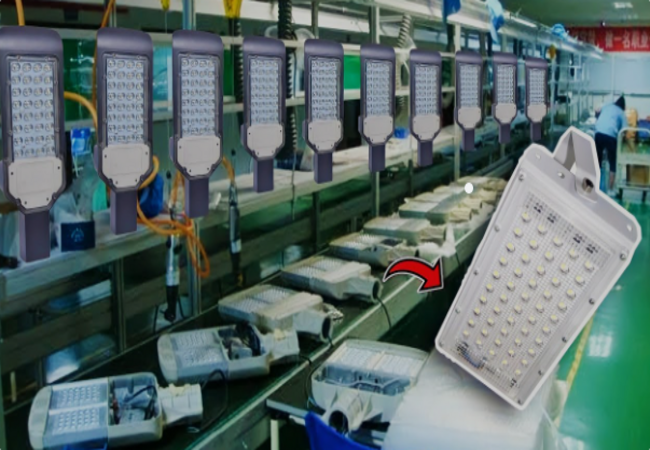In the ever-evolving realm of lighting technology, Light Emitting Diodes (LEDs) have proven to be a revolutionary force, transforming the way we illuminate our world. As LED technology continues to mature, manufacturers are at the forefront of innovation, constantly pushing the boundaries to enhance efficiency, lifespan, and versatility. Led Manufacturing market also now in competition to ensure the quality criteria. This article explores the latest innovations and offers a glimpse into what lies ahead on the horizon of lighting.
Miniaturization and MicroLEDs:
One of the most exciting frontiers in LED manufacturing is the race towards miniaturization. MicroLEDs, tiny individual LED chips typically smaller than 100 micrometers, are gaining traction. Manufacturers are investing heavily in research and development to perfect the production of MicroLED displays, offering higher pixel density, improved brightness, and enhanced color accuracy. As this technology advances, we can expect to see applications ranging from ultra-thin televisions to augmented reality devices.
Quantum Dot Integration:
Quantum dots are semiconductor nanocrystals that, when incorporated into LEDs, can enhance color accuracy and brightness. LED manufacturers are exploring ways to integrate quantum dots into their products to achieve a wider color gamut and improved color rendering index (CRI). This innovation is particularly promising for applications where color precision is crucial; such as in the film industry and medical imaging.
Smart Lighting and IoT Integration:
The era of smart lighting is upon us, and LED manufacturers are playing a pivotal role in this technological shift. The integration of Internet of Things (IoT) capabilities into LED lighting systems allows for unprecedented control and customization. Users can adjust brightness, color temperature, and even schedule lighting changes through smartphone apps or voice commands. Also; As these systems become more sophisticated, we can anticipate further innovations; including adaptive lighting that responds to environmental conditions and user preferences.
Li-Fi Technology:
While Wi-Fi has become an integral part of our daily lives, LED manufacturers are exploring the potential of Li-Fi (Light Fidelity) technology. Li-Fi uses the visible light spectrum to transmit data wirelessly, providing a faster and more secure alternative to traditional Wi-Fi. Another; LED lights equipped with Li-Fi capabilities could revolutionize communication in environments where radio frequency interference is a concern, such as hospitals and aircraft.
Flexible and Bendable LEDs:
Traditional LEDs are rigid, limiting their applications in certain scenarios. To overcome this constraint, manufacturers are developing flexible and bendable LED displays. These innovations open up possibilities for curved screens, conformable lighting solutions, and wearable technologies. Also; Imagine a future where LED-lit clothing not only provides illumination but also serves as a customizable fashion statement.
Energy Harvesting LEDs:
Sustainability is a key focus in today’s technological landscape. LED manufacturers are exploring ways to implement energy harvesting technologies within LED devices. This could involve capturing and converting ambient light or heat into electrical energy to power the LEDs, potentially increasing their efficiency and reducing dependence on external power sources.
Biological Lighting for Health and Well-being:
The impact of lighting on human health and well-being is a burgeoning field of research. LED manufacturers are incorporating tunable white lighting into their products, allowing users to adjust the color temperature of the light. Another; This feature has potential applications in promoting better sleep, enhancing mood, and improving overall health by aligning lighting conditions with the body’s natural circadian rhythm.
Holographic Displays with Holographic LEDs:
Looking further ahead, manufacturers are experimenting with holographic displays using LEDs. Holographic LEDs have the potential to create three-dimensional visual experiences without the need for special glasses. While still in the early stages of development, this innovation could redefine the way we view content, from entertainment to virtual meetings.
Conclusion:
As we navigate the path of technological progress, the future of LED manufacturing appears to be dazzlingly bright. Also; From MicroLEDs and quantum dots to smart lighting and Li-Fi technology, these innovations not only enhance the performance of LED products but also open up new possibilities across various industries. The ongoing commitment of LED manufacturers to push the boundaries of what is possible ensures that our world will be illuminated with ever-increasing efficiency, sustainability, and creativity in the years to comes.




